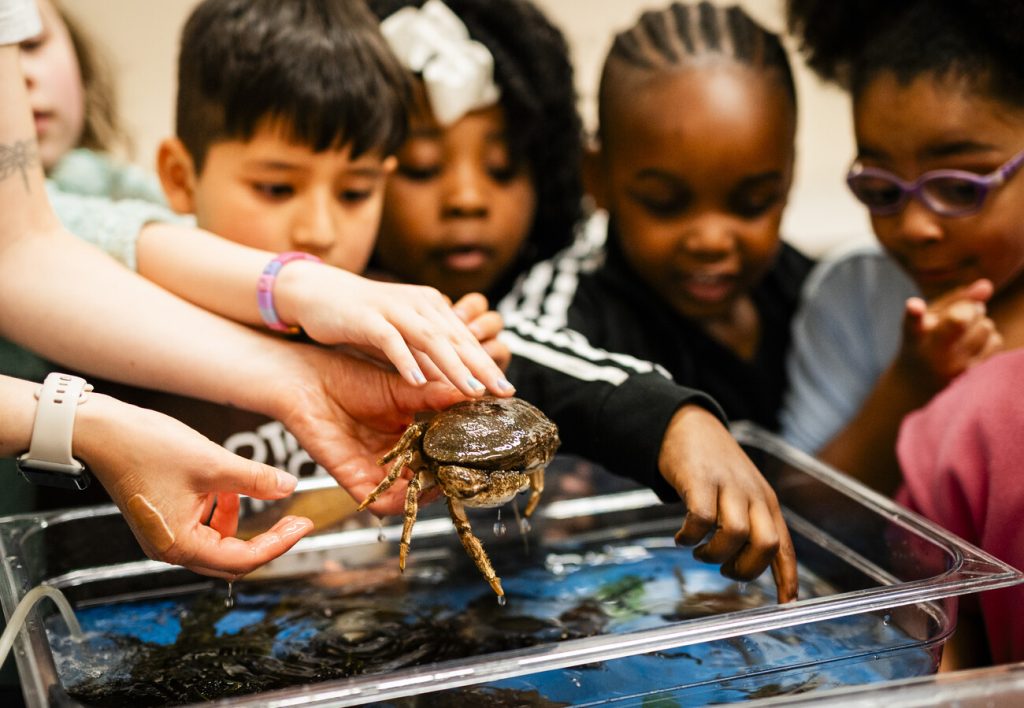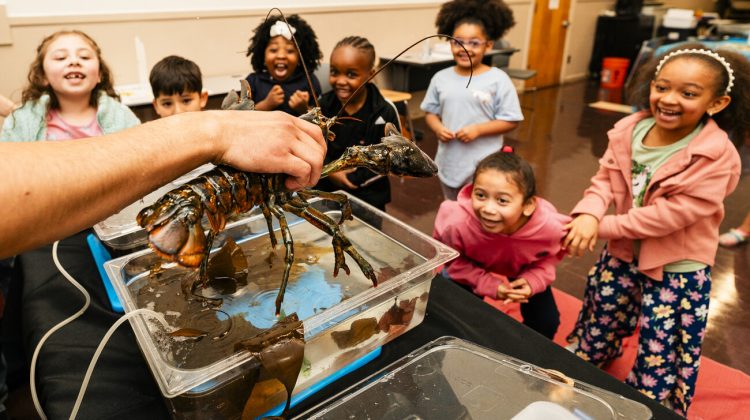LYNN — Students from Brickett Elementary got a special presentation Tuesday, sponsored by Friends of Lynn and Nahant Beach, from Northeastern University Marine Science Center Outreach Program Coordinator Sierra Muñoz, co-op Celia Osborn, co-op Charlee Rivera, a recent graduate who works with Muñoz and the Ocean Genome Legacy Center, Lee Fenuccio, and outreach coordinator for the Friends of Lynn and Nahant Beach, TJ Cullinane.

Students learned about various ocean creatures and even had the opportunity to touch some live ones. Muñoz began the program by telling the kids that they would learn about the ocean and how to look for clues at the beach.
“Next time you go to the beach, you are going to be able to be detectives, and you’re going to be able to tell what’s going on out there at the beach… There are a ton of things living out there in the ocean. Some are animals and some are seaweed. Some are big and some are small. We’re going to meet a lot of different sizes and shapes today,” she said.
Muñoz then pulled out a giant piece of seaweed from a bucket called kelp. She also pulled out a smaller seaweed called red seaweed. The kelp was met with a gasp from the kids, while the red seaweed was met with ‘awws.’
“Seaweed is a great place to start because all of the animals that you’re going to meet need seaweed to eat, they live under it, they need to get their energy from it, and a lot of them use it as camouflage,” she said.
The students were then split into three different groups to visit three stations. One by one, they went to each station to learn about a new topic or creature.
One of those stations was led by Cullinane, who showcased some of the interesting items he had found at the beach, including a shark jaw, a megalodon tooth, the body of a dogfish, and shells belonging to various creatures.

Cullinane told the kids fun facts about everything on his table. At one point he picked up a lobster shell causing the kids to jump back in shock thinking the lobster was alive. They all got a good laugh, though, when he told them that lobsters pee out of their eyes.
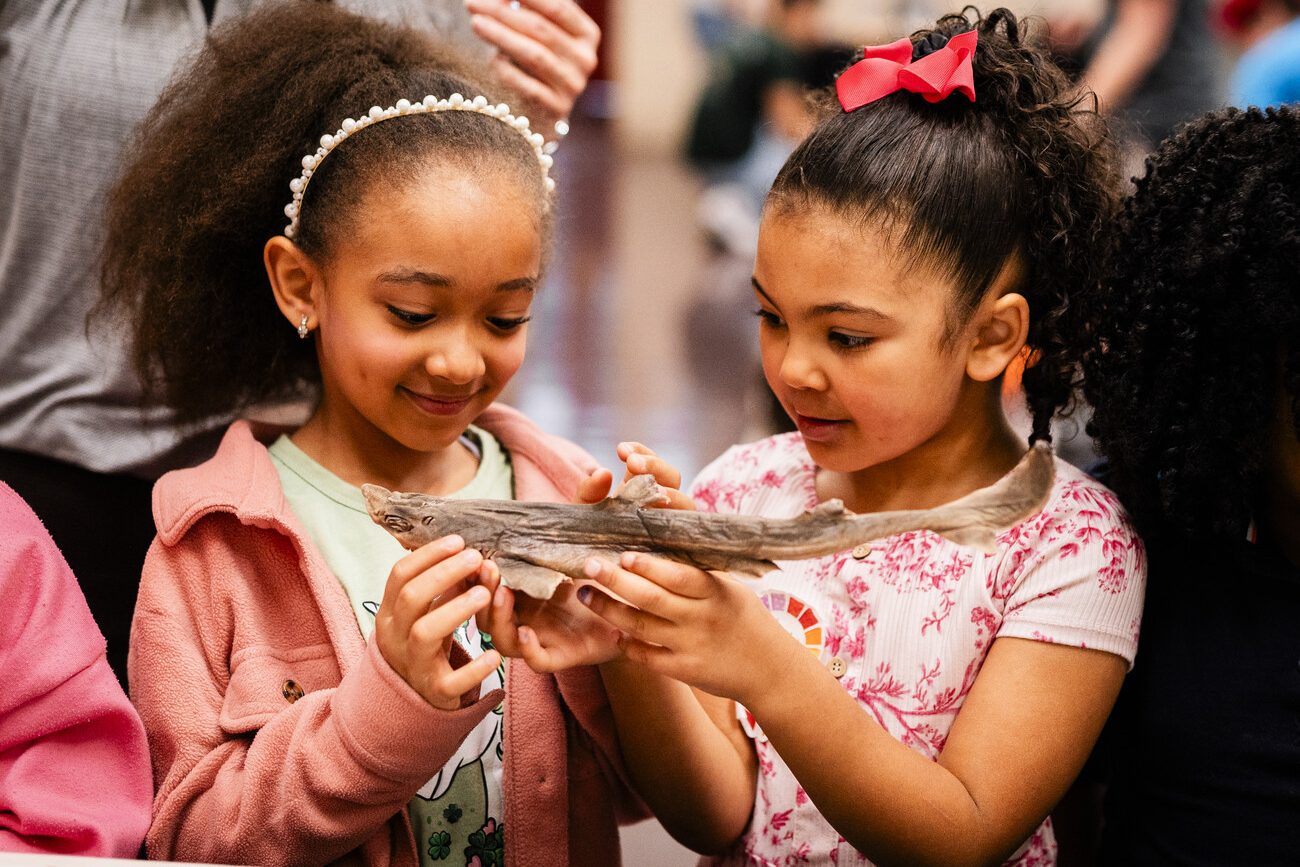
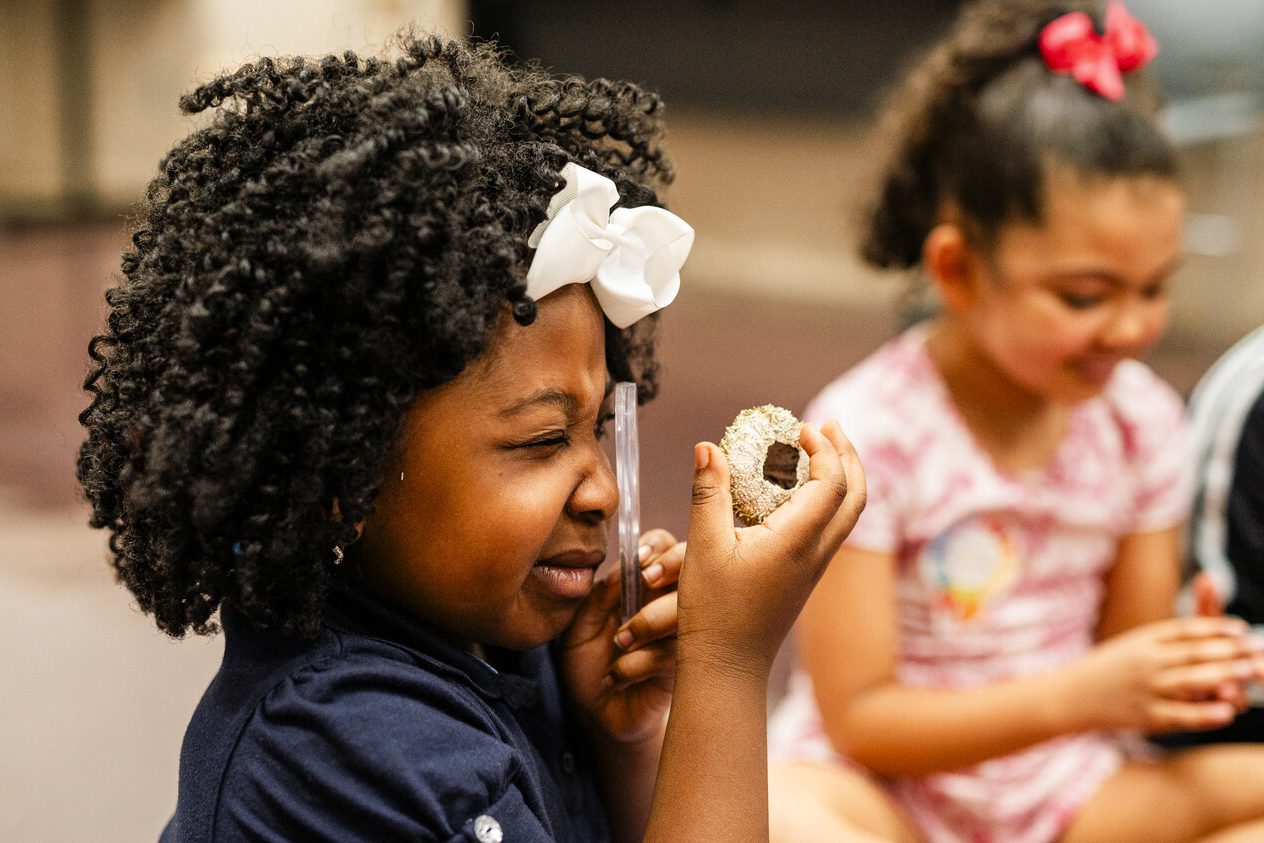
The next station was led by Fenuccio, who first passed out dead sea stars and sea urchins, allowing the students to look at them under magnifying glasses so they could make some observations.
They then got to touch and look at a live sea urchin and sea star. The students were asked to gently touch each creature with just one finger so as not to cause harm to either animal.
The students were especially amazed by the mouth of the sea urchin, looking very closely with their magnifying glasses and gasping when it started to move.
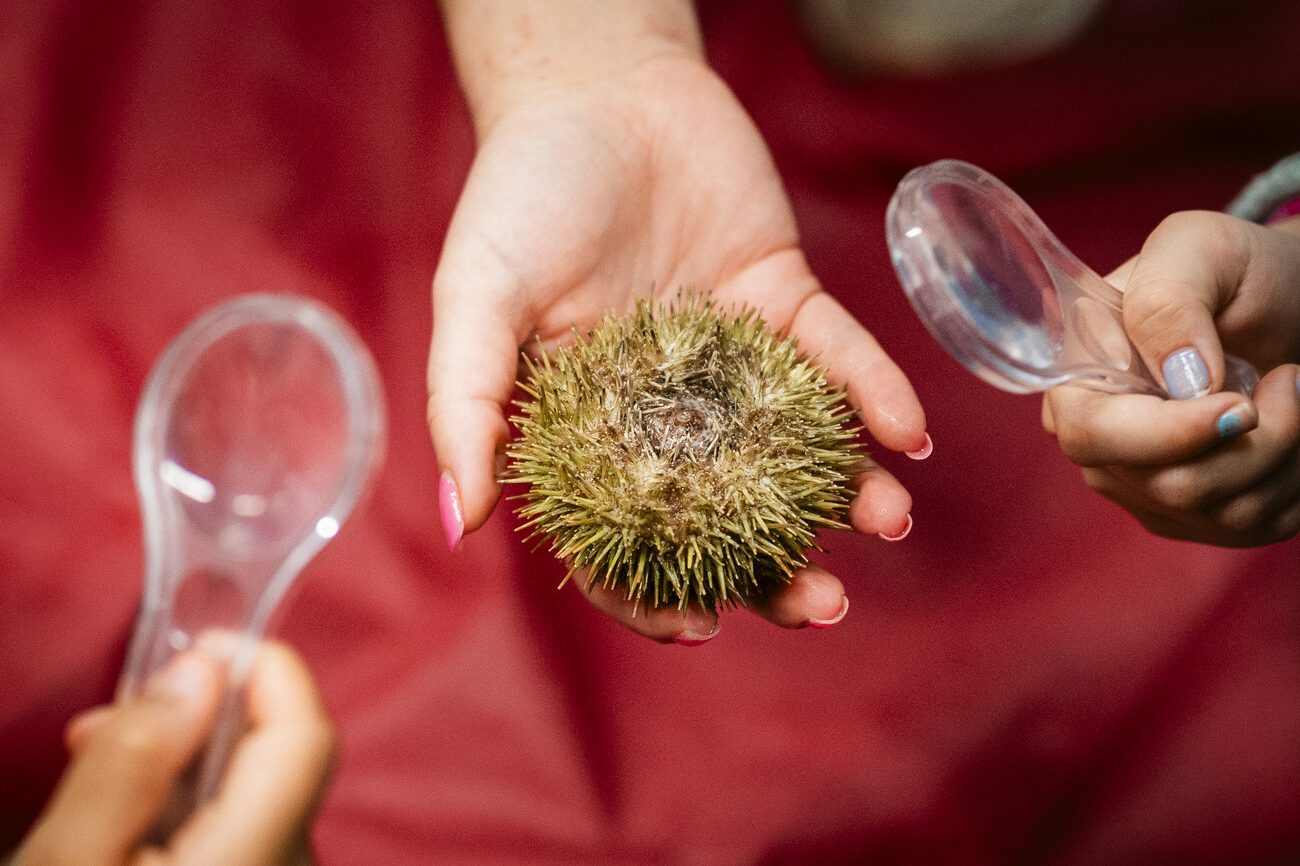

The final station was run by Osborn and Rivera. The students first got to hold and observe crab shells. However, the real excitement came for them when the touch tank tops were taken off and they could see live crabs and even a live lobster inside.
After each group got to visit each station, Muñoz spoke to the students one more time before they headed back to class.
“When you go home and talk to your friends or your family and they say, ‘What did you do at school today?’ you can show them this picture, which also you can take home and color if you want and you can say, ‘Today was a pretty cool day at school. I got to meet a spikey sea urchin. I met a smooth sea star. I met a clicky clacky crab. I saw some squishy seaweed.’ And next time you go to the beach, I want you to look for these things,” she said.
Muñoz gave each child a sheet of paper with pictures of the creatures they met and the kids left the room showing each other the photos with excitement.
